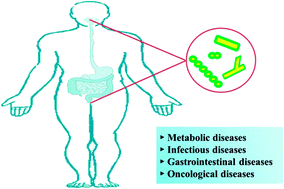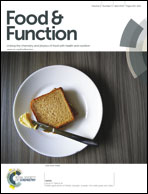Probiotic actions on diseases: implications for therapeutic treatments
Abstract
The ecology of gut microflora, which colonizes all body surfaces, has long coevolved with its hosts in a complicated fashion. Health benefits conferred by gut microflora include defense against invading pathogens, improvement of nutritional bioavailability, and development of the regional and systemic immune systems. The past decade has witnessed growing interest in the fact that the gut microflora affects the host's energy homeostasis by means of various mechanisms, including supplying nourishment from indigestible compounds, producing small biomolecules responsible for lipid profiles, and participating in the absorption, distribution, metabolism and excretion of nutrition. Much in vitro and in vivo research has indicated that aberrant gut microflora plays an important role in the pathogenesis of a wide spectrum of diseases. This is accomplished by a shift in focus, from laying an emphasis on pharmacotherapy to placing more effort on gut microflora normalization. The objectives of this review include illustrating trends in the clinical application of probiotics on diseases, as well as discussing current methodology limitations on probiotic selection. Furthermore, it is expected to shed light on the nature of probiotics, with the aim of giving greater insight into the implications for clinical use of probiotics in the treatment of diseases.


 Please wait while we load your content...
Please wait while we load your content...